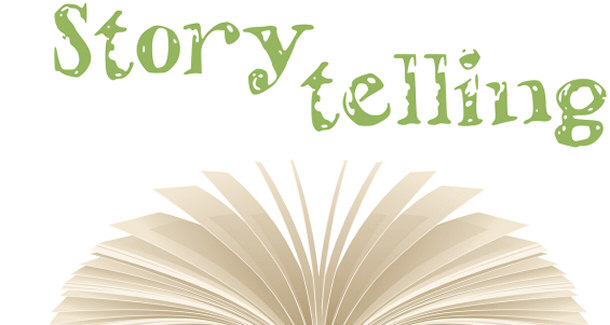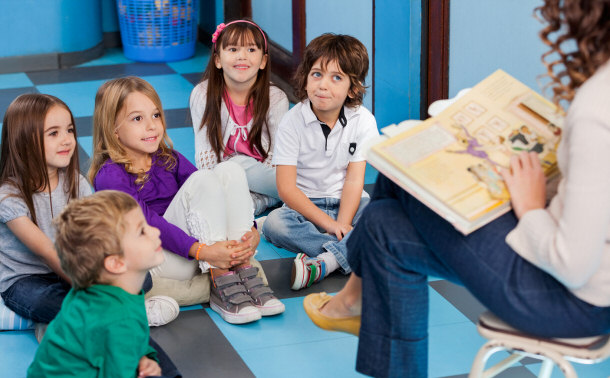*** This article I have written some years ago was originally published here.
Offering natural and ideal listening materials, storytelling in language classes is an effective tool which provides learners with necessary useful contexts. Considered one of the oldest techniques language teachers use, it continues to garnish language learning with colorful and interesting materials students enjoy the most. Naturally, language teachers and even parents have their own distinct styles which educators continually improve.

Ways of making the audience more captive to lessons is one thing teachers work on throughout their careers.
What is storytelling?
Storytelling is an art of using colorful words with some actions to reveal the elements of a story. Often done to bring joy and enjoyment, it subliminally gives wisdom to the audience. Stories often contain morals and a lesson for readers to learn. Since the use of images and actions are limited, storytelling compels the listeners to create their own mental image and expand on their interpretation of the topic. With the enjoyment it brings, retention of the message is enhanced.
Storytelling is an art of using colorful words with some actions to reveal the elements of a story. Often done to bring joy and enjoyment, it subliminally gives wisdom to the audience. Stories often contain morals and a lesson for readers to learn. Since the use of images and actions are limited, storytelling compels the listeners to create their own mental image and expand on their interpretation of the topic. With the enjoyment it brings, retention of the message is enhanced.

Storytelling is an interactive art as it involves both the listeners and the storyteller. The way stories are told and the actions and facial expressions used by the storyteller enhance the story. Often involvement from the audience in encouraged, and it serves as a great opportunity for working on new vocabulary. It also takes many forms and inspired by daily activities that can teach lessons through the use of an easily understood sentence structures. Culturally speaking, it has been utilized to educate the young on the values of a social group they are in with the expectations that those shall be carried on to younger generations.
Why use storytelling
The use of storytelling in language teaching is an effective way of exposing students to the target language. It is an essential tool in conveying messages to students of diverse interests. Considered the oldest education practice, it has made passing of beliefs, traditions and appreciation of history to generations possible.
The use of storytelling in language teaching is an effective way of exposing students to the target language. It is an essential tool in conveying messages to students of diverse interests. Considered the oldest education practice, it has made passing of beliefs, traditions and appreciation of history to generations possible.

Here are some points supporting the use of storytelling in language classes:
1) Can be integrated in the curriculum
With many subjects taught best by elaborating on examples, storytelling is an effective way to teach variety topics. Though mainly considered an essential part of language curriculum, storytelling can actually be used in teaching history, society, and the arts. Listening to stories helps inculcate values in the students’ minds, helping them become even more motivated, driven and inspired to achieve things by learning from the mistakes and victories of the characters.
With many subjects taught best by elaborating on examples, storytelling is an effective way to teach variety topics. Though mainly considered an essential part of language curriculum, storytelling can actually be used in teaching history, society, and the arts. Listening to stories helps inculcate values in the students’ minds, helping them become even more motivated, driven and inspired to achieve things by learning from the mistakes and victories of the characters.
Students Listening Attentivelty During a Language Class Listening Activity


Simple listing of information lessens the processing time for understanding of the general ideas, but storytelling makes information easily remembered. Storytelling in language teaching simulates real use of words and phrases.
2) Caters to students of diverse backgrounds
Since storytelling is present in almost all cultures at any given time, it can help bridge cultural gaps in a diverse classroom. It also teaches cultural sensitivity by developing the students’ knowledge of their social roles and expectations. Telling stories from countries where your student came from creates awareness, deeper understanding, and appreciation of their differences. When students have deeper understanding of their individual backgrounds, creating a cooperative classroom with diverse cultures can be made easy.
Since storytelling is present in almost all cultures at any given time, it can help bridge cultural gaps in a diverse classroom. It also teaches cultural sensitivity by developing the students’ knowledge of their social roles and expectations. Telling stories from countries where your student came from creates awareness, deeper understanding, and appreciation of their differences. When students have deeper understanding of their individual backgrounds, creating a cooperative classroom with diverse cultures can be made easy.

With cultural knowledge, it is easier to foster understanding on what was actually meant by a student during discussions as some cultures are direct but some indirect.
3) Fosters understanding of the humankind
In the age of technology, economic race, and self-sufficiency, storytelling can help students understand the true essence of the human experience. Characters in the story are excellent sources of lessons for learning and building desirable behaviors and character a person needed in order to live fuller life. With the listeners’ emotional involvement, it can be utilized to teach not just language but the practices of a culture where that language is used.
In the age of technology, economic race, and self-sufficiency, storytelling can help students understand the true essence of the human experience. Characters in the story are excellent sources of lessons for learning and building desirable behaviors and character a person needed in order to live fuller life. With the listeners’ emotional involvement, it can be utilized to teach not just language but the practices of a culture where that language is used.

It exposes students to the kind of language use in a certain territory.
4) Helps enhance listening skills
An interesting story keeps the students hooked. As they are eager to know the next part of the story, they do not only develop concentration but also sharpens listening skill. It helps students associate listening with getting information and understanding of the over-all contexts of stories.
An interesting story keeps the students hooked. As they are eager to know the next part of the story, they do not only develop concentration but also sharpens listening skill. It helps students associate listening with getting information and understanding of the over-all contexts of stories.

Since listening is considered an essential language skill that facilitates learning, storytelling opens the students’ perspective on the act and widens their opportunity to maximize learning.
5) Improves imagination
Listening to stories stimulates thought processes. When teachers make use of storytelling, students are challenged to draw conclusions by creating images for characters as they are presented in the story. Judgment and inferences can often be based on the learners’ experiences, so they are likely to interpret stories by making use of their realities.
Listening to stories stimulates thought processes. When teachers make use of storytelling, students are challenged to draw conclusions by creating images for characters as they are presented in the story. Judgment and inferences can often be based on the learners’ experiences, so they are likely to interpret stories by making use of their realities.

Telling a story enables the listener to immerse himself into the plot and start seeing things from the perspective of the character. This helps them develop imagination on both life and linguistic experiences.
Make Storytelling Engaging: Creative Ways to Follow
 It can never be denied that despite being in a language classroom, some students, especially younger ones, lack motivation to learn. Most find no meaning in acquiring a new language and eventually become non-achieving. The teacher then is tasked to critically choose stories that will not only encourage listening but language learning. When interest in a topic is aroused, attitudes towards learning the language are changed, making it enjoyable, meaningful and comprehensible to students.
It can never be denied that despite being in a language classroom, some students, especially younger ones, lack motivation to learn. Most find no meaning in acquiring a new language and eventually become non-achieving. The teacher then is tasked to critically choose stories that will not only encourage listening but language learning. When interest in a topic is aroused, attitudes towards learning the language are changed, making it enjoyable, meaningful and comprehensible to students.
Follow these steps to make storytelling more engaging for students:
1) Choose the right material
Even a veteran storyteller needs to upgrade to new techniques, and eventually new materials that fit the interest of this generation. There is no generic formula of what is the perfect material for storytelling as it should be chosen based on the needs and interests of the audience. In most cases, we choose materials that we personally treasured and loved to listen to as kids. This would generally include fairy tales and folklore.
Even a veteran storyteller needs to upgrade to new techniques, and eventually new materials that fit the interest of this generation. There is no generic formula of what is the perfect material for storytelling as it should be chosen based on the needs and interests of the audience. In most cases, we choose materials that we personally treasured and loved to listen to as kids. This would generally include fairy tales and folklore.

With the availability of fresh story books in the market, teachers are provided with many choices. When these materials don’t seem to fit the kind of audience in class, giving old stories a fresh approach can do the job. Try modifying some elements of the story you love without dropping its original message. Better yet, ask students what they wanted to listen to for the storytelling sessions by making storybooks available in the classroom.
2) Characterize the content
Bringing the characters in the story to life makes storytelling fun as it enables the audience to see, feel, and hear exactly what the character wanted them to. Remember that without emotion, stories become basically dead. It is then important that the teacher knows the stories by heart. When the teacher knows the content of the story and the message embedded in it, it is easier to characterize. Read and internalize the characters and practice them even just in front the mirror. Convey how the characters feel by making use of body language, gestures, facial expressions and tone of voice.
Bringing the characters in the story to life makes storytelling fun as it enables the audience to see, feel, and hear exactly what the character wanted them to. Remember that without emotion, stories become basically dead. It is then important that the teacher knows the stories by heart. When the teacher knows the content of the story and the message embedded in it, it is easier to characterize. Read and internalize the characters and practice them even just in front the mirror. Convey how the characters feel by making use of body language, gestures, facial expressions and tone of voice.

When the character is angry, make the audience see and hear it. Know when to shift actions and voice to help the audience distinguish between characters. Making your content interesting help foster your students’ interest in the language.
3) Maximize opportunities for literacy
Even the most reluctant reader or learner can be motivated to listen to an interesting story. Considered as one of the ways to address literacy, storytelling helps develop students’ competencies in all areas of the language by modeling oral skills, writing, and comprehension. Storytelling exposes the students to reading and listening, and post-storytelling activities help develop speaking and writing. Teachers who utilize storytelling should choose materials that fit the needs of the students and of the curriculum.
Even the most reluctant reader or learner can be motivated to listen to an interesting story. Considered as one of the ways to address literacy, storytelling helps develop students’ competencies in all areas of the language by modeling oral skills, writing, and comprehension. Storytelling exposes the students to reading and listening, and post-storytelling activities help develop speaking and writing. Teachers who utilize storytelling should choose materials that fit the needs of the students and of the curriculum.

These stories should provide variety of messages, often with pictures or flash cards, to help get the message across to solicit students’ attention. Storytelling is one effective method in transporting students back in time and history. This helps shape the way they see the world.
4) Use props
As most children learn through visual representations, using props in storytelling sessions foster deeper understanding and appreciation of materials. Props help liven up the lines and hook the students making them concentrate more. Handy props are the most popular to use in classrooms. This can range from flowers, ball, doll, or a piece of cloth. The use of props in storytelling extends a child's attention span and increases their learning experiences.
As most children learn through visual representations, using props in storytelling sessions foster deeper understanding and appreciation of materials. Props help liven up the lines and hook the students making them concentrate more. Handy props are the most popular to use in classrooms. This can range from flowers, ball, doll, or a piece of cloth. The use of props in storytelling extends a child's attention span and increases their learning experiences.

Additionally, it makes lessons less boring and easy to remember. It is best to know, though, that props should be minimized to a level not distracting to students. When there is too much of them, students may be tempted to focus on them rather than to the story the teacher reads. The most widely used props are those that generate sounds for effect at a certain part of the story.
5) Involve the students
As storytelling relies on the collaboration of both the teller and the audience, it is best practiced with student participation. Tell story the way that excites students to talk and interact. Involving students can be as simple as making them repeat some lines you wanted to emphasize. Alternately, you can check students’ comprehension by asking them to act out some parts of the story. For younger learners, this can even be done by animal sound reproductions. After telling the story, the teacher can ask students for the possible ending or solicit questions for other class members to answer.
As storytelling relies on the collaboration of both the teller and the audience, it is best practiced with student participation. Tell story the way that excites students to talk and interact. Involving students can be as simple as making them repeat some lines you wanted to emphasize. Alternately, you can check students’ comprehension by asking them to act out some parts of the story. For younger learners, this can even be done by animal sound reproductions. After telling the story, the teacher can ask students for the possible ending or solicit questions for other class members to answer.

Some students can even be assigned to alternately serve as co-tellers in the beginning of the storytelling sessions. For more advanced students, retelling the story in front of the class the next day can be practiced. Involving students in lessons do not only develop their cognitive skills but enhances confidence in speaking and motivation to learn.
Conclusion
Students’ experiences are best molded with descriptive and language skills development. When students enjoy learning, they are not only creating a collection of knowledge but are constantly looking for ways to know things that interest them. With their curiosity for learning comes their perspective of the world. Studies reveal that storytelling is an effective way for increasing the literacy level. This is because it enhances all the language skills- reading, listening, speaking and writing- all in one. Because storytelling is participatory in nature, students have greater exposure to language use.
Students’ experiences are best molded with descriptive and language skills development. When students enjoy learning, they are not only creating a collection of knowledge but are constantly looking for ways to know things that interest them. With their curiosity for learning comes their perspective of the world. Studies reveal that storytelling is an effective way for increasing the literacy level. This is because it enhances all the language skills- reading, listening, speaking and writing- all in one. Because storytelling is participatory in nature, students have greater exposure to language use.
Storytelling provides an environment of rich linguistic and cultural learning. For children, it serves as a meaningful way of modeling language use. In fact, most of early education curriculum focuses more on story-based lessons. When materials are properly chosen and with teachers equipped with skills to convey stories in a more engaging and interesting ways, meeting the objectives of literacy programs are easily achieved. Being able to facilitate development in comprehension, storytelling is a great way to start teaching language students to construct meanings.
No comments:
Post a Comment